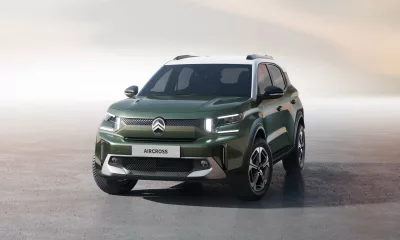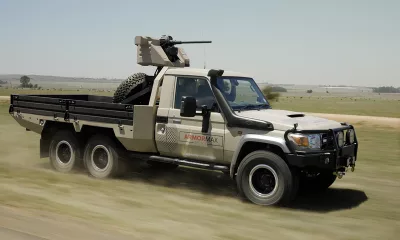In a second instalment of an article recounting his experiences with the legendary Suzuki Katana, Patrick van Sleight says that despite its ageing technology, the bike is still a joy to ride.
In the second instalment of an article recounting his experiences with the legendary Suzuki Katana, Patrick van Sleight says that, despite its ageing technology, the bike is still a joy to ride.
If you are used to a modern bike, prepare to be frightened by the brakes; what was state-of-the-art then, is positively lifeless and powerless today. It does make it a mildly dangerous bike to speed on, and emergency stops can be scary due to the lack of feel; so it is very easy to misjudge grip and lock up the wheels. It also needs a much longer distance to come to a halt than even a small modern bike.
Suzuki is known to build super-smooth gearboxes, but this was obviously only after the Katana. The bike’s gearbox is very notchy and stiff, making it easy to miss gears, especially when in a hurry.
Perhaps the most remarkable feature about this bike is its communication with the rider. It might be as a result of its relatively unsophisticated nature (in comparison to modern bikes), but the bars, foot pegs and seat give feedback to the rider all the time. This makes it enormous fun to ride, perhaps to the point of making speed a by-product, even unnecessary, in the ownership experience. It is a bike that can be enjoyed riding at 90 km/h all day long, savouring the sensations it provides.
The comparatively high weight and slow, heavy steering of the bike make it difficult to flick from side-to-side through quick corners. Having said that, the Katana is lower, narrower and less bulky than quite a lot of its rivals of the time. Still, through simple inertia perhaps, it understeers heavily into corners. Backing off the throttle tucks the nose in, but then you can feel the bulk of the engine upsetting the balance.
Factor in outdated suspension and tyres, and you would want to think twice about chasing modern tackle on that breakfast run. The handling is more suited to fast, flowing bends. In its favour, the high weight and long wheelbase give the bike a planted, secure feel, most appreciated at high speed in a straight line. The stability is quite noticeable from speeds of 180 km/h and upwards, where some modern bikes begin to feel flighty, especially at the front.
This makes the Katana a great sports-tourer, but its preference for style rather than function means practicality is compromised. As with most uncompromising superbikes, even those of today, it has no fuel gauge and underseat storage space. Yet the roomy, low and broad seat makes taking a pillion no trouble, perhaps another benefit of the old-style engineering.
The bike’s appeal as a daily commuter in town is also limited by the heavy steering with its big turning circle. On the other hand, the low seat makes paddling the bike much easier than was the case with other heavyweights of the time.
It is easy to see why the bike is still so popular – it is one mean ride. And perhaps this was the point Suzuki wanted to make; without the styling, not as many people would have known how fantastic the GSX range was. With top speeds of well over 200 km/h, both the 750 and 1 100 Katanas were the fastest bikes available in their respective classes when they were launched. These speeds are still high enough to get you into serious trouble today.
|
-->
|




